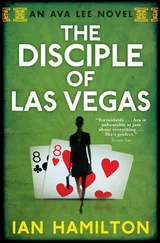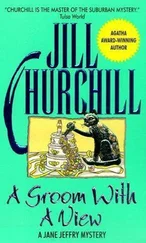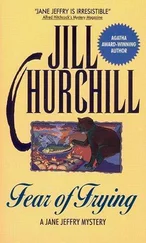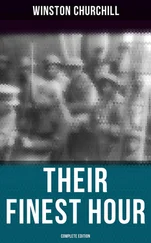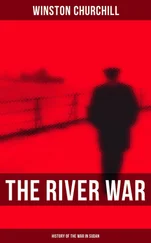Winston Churchill - Ian Hamilton's March
Здесь есть возможность читать онлайн «Winston Churchill - Ian Hamilton's March» весь текст электронной книги совершенно бесплатно (целиком полную версию без сокращений). В некоторых случаях можно слушать аудио, скачать через торрент в формате fb2 и присутствует краткое содержание. Год выпуска: 2018, Издательство: epubBooks Classics, Жанр: История, Прочая документальная литература, на английском языке. Описание произведения, (предисловие) а так же отзывы посетителей доступны на портале библиотеки ЛибКат.
- Название:Ian Hamilton's March
- Автор:
- Издательство:epubBooks Classics
- Жанр:
- Год:2018
- ISBN:нет данных
- Рейтинг книги:4 / 5. Голосов: 1
-
Избранное:Добавить в избранное
- Отзывы:
-
Ваша оценка:
- 80
- 1
- 2
- 3
- 4
- 5
Ian Hamilton's March: краткое содержание, описание и аннотация
Предлагаем к чтению аннотацию, описание, краткое содержание или предисловие (зависит от того, что написал сам автор книги «Ian Hamilton's March»). Если вы не нашли необходимую информацию о книге — напишите в комментариях, мы постараемся отыскать её.
London to Ladysmith
Ian Hamilton's March — читать онлайн бесплатно полную книгу (весь текст) целиком
Ниже представлен текст книги, разбитый по страницам. Система сохранения места последней прочитанной страницы, позволяет с удобством читать онлайн бесплатно книгу «Ian Hamilton's March», без необходимости каждый раз заново искать на чём Вы остановились. Поставьте закладку, и сможете в любой момент перейти на страницу, на которой закончили чтение.
Интервал:
Закладка:
No sooner had these two guns come into action than a very ugly attack was made on them. The ridge from which they were firing was one of those gentle swells of ground which, curving everywhere, nowhere allows a very extended view; and the Boers, about 200 strong, dashed forward with the greatest boldness in the hope of bringing a close musketry fire to bear on the gunners and of capturing their pieces. So sudden was the attack that their heads were seen appearing over the grass scarcely 300 yards away. In these circumstances the guns fired case shot, but though they prevented the Boers from coming nearer, it was evident that the position was still critical. Broadwood was compelled, therefore, to ask the 12th Lancers to charge.
PLAN OF THE OPERATIONS OF 11TH AND 12TH JUNE, 1900
The continual shrapnel fire of the last few hours had, in spite of their dispersed formation, caused a good deal of loss among the horses of the brigade. The Earl of Airlie, who was riding with the brigadier, had had his horse shot under him, and had gone away to find another. He returned to place himself at the head of his regiment just as it was moving forward to the attack, and, perhaps unacquainted with the latest development of the action, he gave a direction to the charge which was slightly more northerly than that which Broadwood intended; so that, in advancing, the regiment gradually came under the fire of the enemy holding the lower slopes of Diamond Hill, instead of falling on those who were directly threatening the guns. But it was a fine, gallant manoeuvre, executed with a spring and an elasticity wonderful and admirable in any troops, still more in troops who have been engaged for eight months in continual fighting with an elusive enemy, and who must have regarded any action, subsequent to the capture of Pretoria, rather in the nature of an anti–climax.
Its effect was instantaneous. Though the regiment scarcely numbered 150 men, the Boers fled before them—those who were threatening the guns towards the south, and those immediately in the line of the charge eastward and northward, towards Diamond Hill. Had the horses been fresh and strong a very severe punishment would have been administered to the enemy; but with weary and jaded animals—many of them miserable Argentines, and all worn out with hard work and scanty food—they were unable to overtake the mass of fugitives who continued to fly before them. A few, however, stood boldly, and one man remained firing his rifle until the charge was close on him, when he shot Lieutenant Wright dead at only a few yards distance, and then, holding up his hands, claimed quarter. This was, however, most properly refused. Altogether ten Boers perished by the lance, and the moral effect on those who escaped must certainly have been considerable. But now in pursuit the regiment gradually came nearer to the enemy's main position, and drew a heavy fire on their left flank.
Seeing this, and having obtained the object with which he had charged—the immediate relief of the guns—Lord Airlie gave the order 'files about,' and withdrew his regiment before it became too seriously involved. As he issued this command he was struck by a heavy bullet through the body, and died almost immediately. So fell, while directing his regiment in successful action, an officer of high and noble qualities, trusted by his superiors, beloved by his friends, and honoured by the men he led. The scanty squadrons returned in excellent order to the positions they had won, having lost in the charge, and mostly in the retirement, two officers, seventeen men, including a private of the 10th Hussars, who managed to join in, and about thirty horses.
Meanwhile the pressure on Broadwood's right had become very severe. A large force of Boers who were already engaging the 17th Lancers and the rest of Gordon's Brigade, but who were apparently doubtful of attacking, seeing the advance checked, now swooped down and occupied a kraal and some grassy ridges whence they could bring a heavy enfilading fire to bear. Broadwood, who throughout these emergencies preserved his usual impassive composure, and whose second horse had been shot under him, ordered the Household Cavalry to 'Clear them out.'
The troopers began immediately to dismount with their carbines, and the General had to send a second message to them, saying that it was no good firing now, and that they must charge with the sword. Whereon, delighted at this unlooked–for, unhoped–for opportunity, the Life Guardsmen scrambled back into their saddles, thrust their hated carbines into the buckets, and drawing their long swords, galloped straight at the enemy. The Boers, who in this part of the field considerably outnumbered the Cavalry, might very easily have inflicted severe loss on them. But so formidable was the aspect of these tall horsemen, cheering and flogging their gaunt horses with the flat of their swords, that they did not abide, and running to their mounts fled in cowardly haste, so that, though eighteen horses were shot, the Household Cavalry sustained no loss in men.
These two charges, and the earnest fashion in which they were delivered, completely restored the situation; but though Broadwood maintained all the ground he had won, he did not feel himself strong enough, in face of the severe opposition evidently to be encountered, to force his way through the poorte.
At about noon the Field–Marshal, who was with the Eleventh Division, observing an apparent movement of the enemy in his front, concluded that they were about to retreat, and not wishing to sacrifice precious lives if the strategic object were attained without, sent Ian Hamilton a message not, unless the resistance of the enemy was severe, to weary his men and horses by going too far. Hamilton, however, had seen how closely Broadwood was engaged, and fearing that if he stood idle the enemy would concentrate their whole strength on his Cavalry commander, he felt bound to make an attack on the enemy on the lower slopes of Diamond Hill, and so hold out a hand to Broadwood.
He therefore directed Bruce–Hamilton to advance with the Twenty–first Brigade. This officer, bold both as a man and as a general, immediately set his battalions in motion. The enemy occupied a long scrub–covered rocky ridge below the main line of hills, and were in considerable force. Both batteries of artillery and the two 5–in. guns came into action about two o'clock. The Sussex Regiment, moving forward, established themselves on the northern end of the ridge, which was well prepared by shelling, and while the City Imperial Volunteers and some parts of the Mounted Infantry, including the Corps of Gillies, held them in front, gradually pressed them out of it by rolling up their right.
DIAGRAM EXPLAINING THE ACTION OF DIAMOND HILL
There is no doubt that our Infantry have profited by the lessons of this war. The widely–extended lines of skirmishers moving forward, almost invisible against the brown grass of the plain, and taking advantage of every scrap of cover, presented no target to the Boer fire. And once they had gained the right of the ridge it was very difficult for the enemy to remain.
Accordingly at 3.30 the Boers in twenties and thirties began to abandon their position. Before they could reach the main hill, however, they had to cross a patch of open ground, and in so doing they were exposed to a heavy rifle fire at 1,200 yards from the troops who were holding the front.
From where I lay, on the left of the Gillies' firing line, I could see the bullets knocking up the dust all round the retreating horsemen, while figures clinging to saddles or supported by their comrades, and riderless horses, showed that some at least of the bullets had struck better things than earth. So soon as they reached fresh cover, the Dutchmen immediately reopened fire, and two of the Gillies were wounded about this time.
Читать дальшеИнтервал:
Закладка:
Похожие книги на «Ian Hamilton's March»
Представляем Вашему вниманию похожие книги на «Ian Hamilton's March» списком для выбора. Мы отобрали схожую по названию и смыслу литературу в надежде предоставить читателям больше вариантов отыскать новые, интересные, ещё непрочитанные произведения.
Обсуждение, отзывы о книге «Ian Hamilton's March» и просто собственные мнения читателей. Оставьте ваши комментарии, напишите, что Вы думаете о произведении, его смысле или главных героях. Укажите что конкретно понравилось, а что нет, и почему Вы так считаете.

